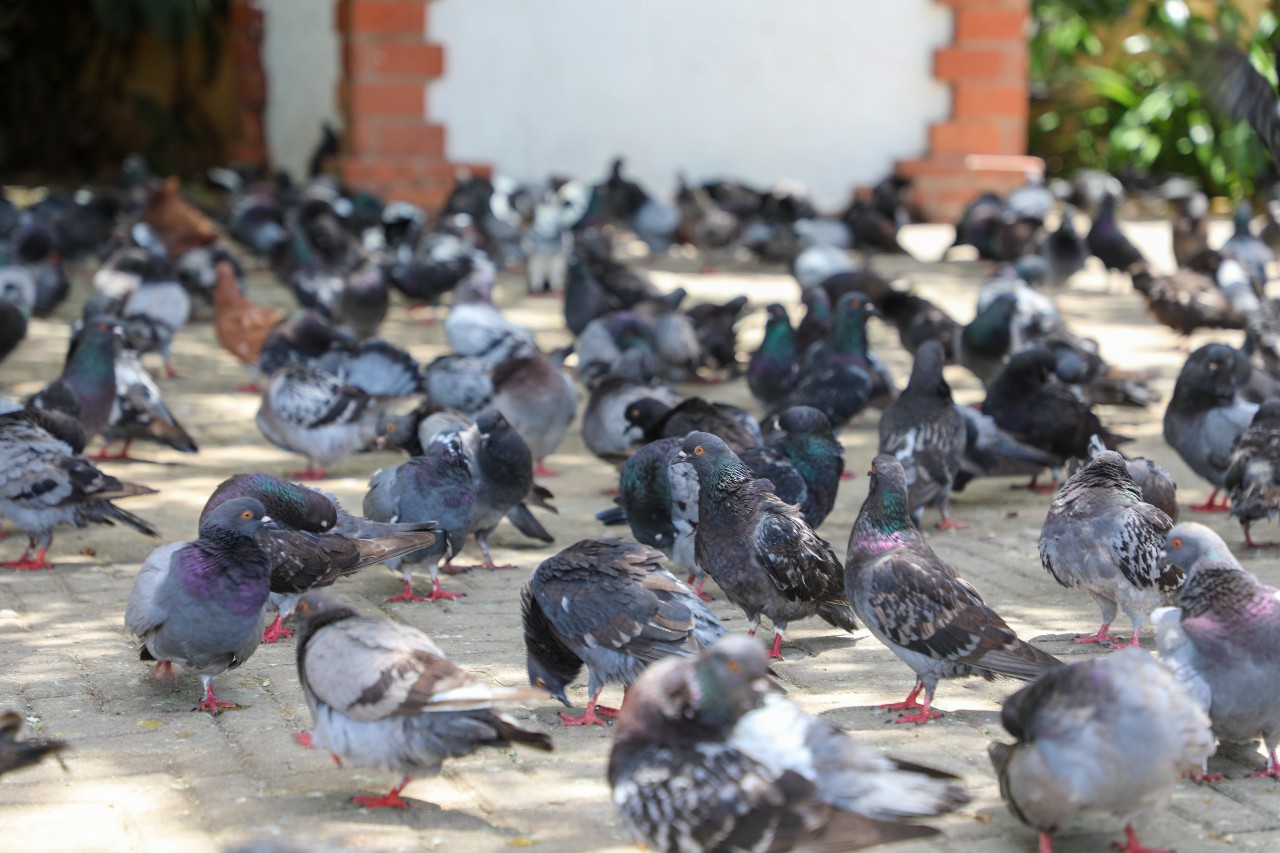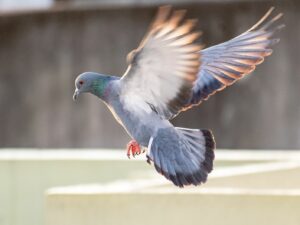As a rescued pet pigeon owner, I’ve developed a deep appreciation for these fascinating birds. They’re incredibly intelligent, social creatures that form tight-knit communities.
One aspect of pigeon behavior that has always intrigued me is the way they gather in groups. I remember wondering what a group of pigeons is called and decided to do some research.
In this article, I’ll be sharing what I’ve learned about the different terms used to describe a group of pigeons.
First, let’s define “flock.” A flock refers to a group of birds that are traveling or feeding together. When it comes to pigeons, this term is often used to describe a group of birds in flight.
But, what do we call a group of pigeons that are resting or roosting together?
This is where things get a bit more interesting. You may be surprised to learn that there are several different terms used to describe a group of pigeons, each with its own unique history and connotation.
Let’s explore what these terms are and what they mean.
JUMP TO:

The Common Name for a Group of Pigeons
Here are the three common names for a group of pigeons.
A Group of Pigeons: Flock
As mentioned earlier, “flock” is a commonly used term to describe a group of pigeons in flight. This term is easily recognizable and widely used among bird enthusiasts and the general public. The word “flock” has been in use for many centuries and is derived from the Old English word “flocc,” which means a group of animals or birds.
A Group of Pigeons: Kit
“Kit” is a term that is less commonly used, but still recognized by some pigeon enthusiasts. It refers to a small, tight-knit group of pigeons that are resting or roosting together. T
he origin of this term is unclear, but it is thought to have originated from the old English word “cyt,” which means a gathering or assembly. The term “kit” is not widely used outside of specific pigeon-keeping communities and is not as recognizable as “flock.”
A Group of Pigeons: Paste
“Paste” is a more regional term used in some parts of the UK to describe a group of pigeons. Like “kit,” it refers to a group of pigeons that are resting or roosting together. T
he origin of this term is also unclear, but it is thought to have arisen from the old English word “paest,” which means a group of animals. This term is not widely used outside of the UK and may not be familiar to those in other parts of the world.
Check my other articles about pigeons:
- What Do Pigeons Symbolize?
- How Do Pigeons Know Where To Go?
- Do Pigeons Fly At Night?
- How Do Pigeons Sleep?
- Do Pigeons Carry Diseases?
How is each of these terms used?
Each of these terms has its own unique history and connotations. “Flock” is the most widely recognized and used term, while “kit” and “paste” are less commonly used and have a more regional significance.
It’s important to understand the different terms used to describe a group of pigeons as it helps to broaden our understanding of these fascinating creatures and the ways in which they interact and form communities.
Regardless of the term used, all of these words refer to a group of pigeons that are traveling, feeding, or resting together.

The Importance of Understanding Group Nomenclature
Understanding the different terms used to describe a group of pigeons is important for both a deeper understanding of pigeon behavior and communication, as well as a greater appreciation of nature and wildlife.
Whether you call it a “flock,” a “kit,” or a “paste,” a group of pigeons is always a fascinating sight to behold.
Understanding animal behavior and communication
Understanding the different terms used to describe a group of pigeons is important because it helps us to better understand their behavior and communication.
Pigeons are social creatures that form close-knit communities and their behavior is often influenced by their surroundings and the presence of other pigeons.
By understanding the different terms used to describe a group of pigeons, we can gain insight into how they interact with each other and form these communities.
Appreciation of nature and wildlife
In addition to gaining a deeper understanding of pigeon behavior, understanding the different terms used to describe a group of pigeons can also enhance our appreciation of nature and wildlife.
It’s fascinating to learn about the different names used to describe a group of pigeons and the unique histories and connotations behind each term. This kind of knowledge helps to broaden our understanding of the natural world and the creatures that inhabit it.
Final thoughts on flocks, kits, and pastes
In conclusion, the different names used to describe a group of pigeons, such as “flock,” “kit,” and “paste,” all provide insight into the behavior and communication of these fascinating creatures.
While “flock” is the most widely recognized term, the lesser known “kit” and “paste” are still important to understand as they reflect the unique cultural and regional differences in the way we understand and appreciate pigeons.
Whether you’re a seasoned pigeon enthusiast or just discovering the joys of observing these birds, understanding the different terms used to describe a group of pigeons is an essential aspect of your journey.
What a group of pigeons is called? FAQs
What is a commonly used term to describe a group of pigeons?
A commonly used term to describe a group of pigeons is “flock.”
Is “flock” the only term used to describe a group of pigeons?
No, “flock” is not the only term used to describe a group of pigeons. Other terms such as “kit” and “paste” are also used, although less commonly.
What is the meaning of the term “kit” when referring to a group of pigeons?
“Kit” refers to a small, tight-knit group of pigeons that are resting or roosting together.
What is the origin of the term “kit”?
The origin of the term “kit” is unclear, but it is thought to have originated from the Old English word “cyt,” which means a gathering or assembly.
Is the term “kit” commonly used to describe a group of pigeons?
No, the term “kit” is not commonly used to describe a group of pigeons and is more recognizable within specific pigeon-keeping communities.
Is the term “paste” used to describe a group of pigeons outside of the UK?
No, “paste” is a regional term used only in some parts of the UK to describe a group of pigeons.
What is the origin of the term “paste”?
The origin of the term “paste” is unclear, but it is thought to have arisen from the Old English word “paest,” which means a group of animals.
Why is it important to understand the different terms used to describe a group of pigeons?
Understanding the different terms used to describe a group of pigeons helps us to better understand their behavior and communication, as well as broaden our appreciation of nature and wildlife.
Does the term used to describe a group of pigeons affect their behavior or communication?
No, the term used to describe a group of pigeons does not affect their behavior or communication. However, understanding the different terms can provide insight into their behavior and communication patterns.
Are all terms used to describe a group of pigeons interchangeable?
No, not all terms used to describe a group of pigeons are interchangeable. “Flock” is the most widely recognized term, while “kit” and “paste” are less commonly used and have more specific connotations.
Other related articles:




